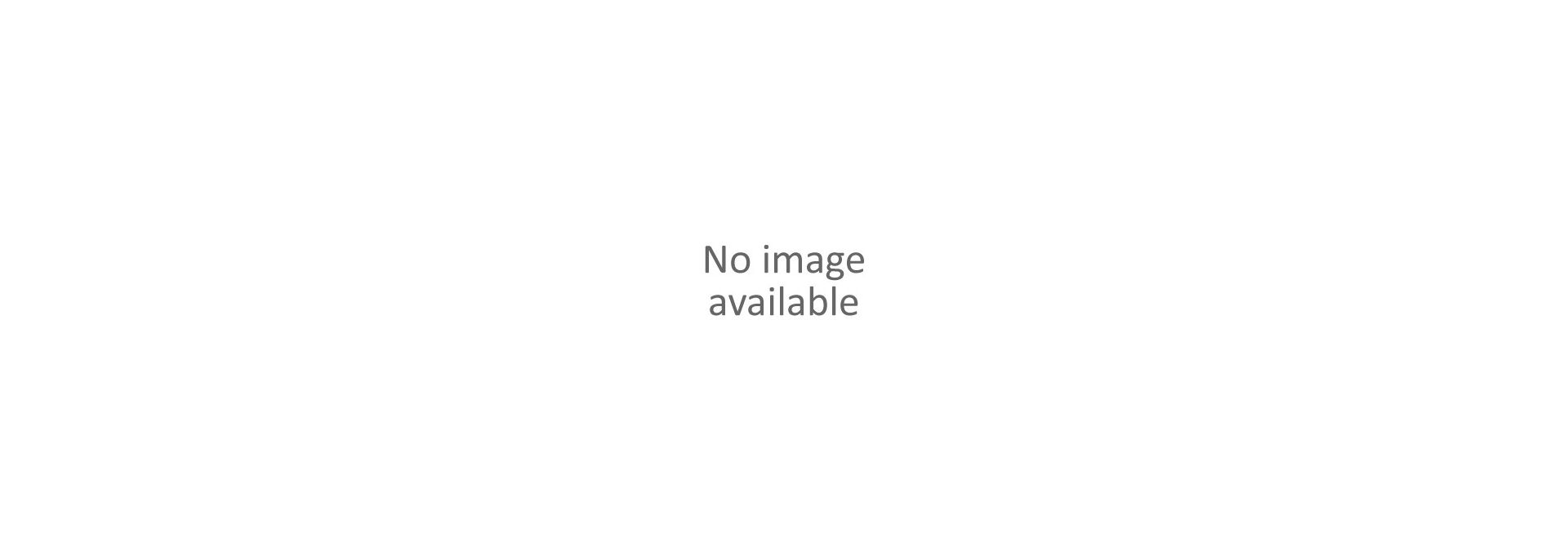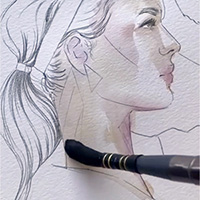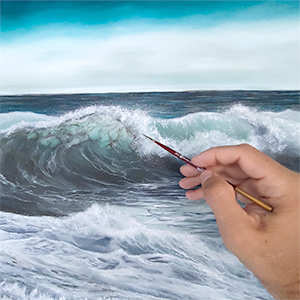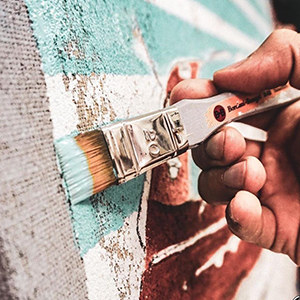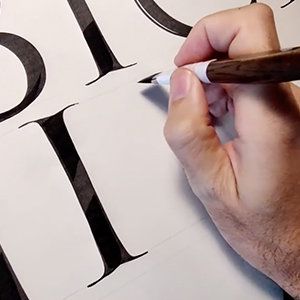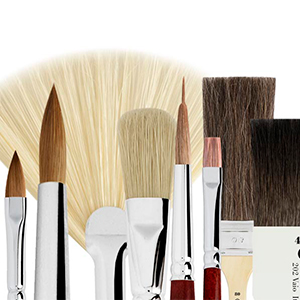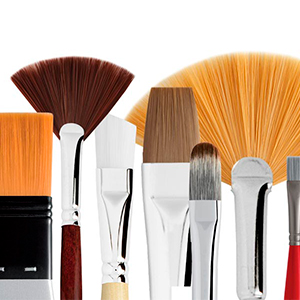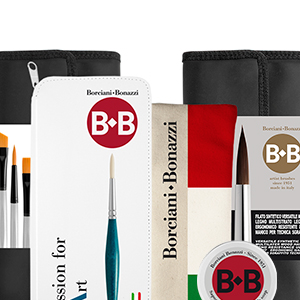TEMPERA PAINTING
Temperas are colors that are diluted with water, with a opaque rendering: commonly associated with children’s painting for natural composition are a great help for full-color images used in both illustration and decoration and layout by artists. An example is the decoration of blackboards or temporary showcases very widespread in the fittings of shops in particular periods. The great Papier Paint of the high French decoration of 700 were entirely made in tempera.
Tempera is certainly the oldest and most used color in the history of painting; pigments mixed with natural binders such as egg yolk, animal glues, casein and starch, with a formulation that has often been modified by artists over the centuries, allows to obtain colors with a bright and opaque finish.
The fundamental characteristics of the tempera are the reversibility in water, the lack of use of solvents and the speed of drying: called "washable" colors, because they can be dissolved even dry with water, they are simple to use for those who want to approach the painting for the first time and allow instead expert hands and fast perfect shades. All tools, from brushes to palettes, are washable with water very easily.
The tempera on the market today is generally composed of pigment, reversible natural binder in water and inert substances, such as chalk or calcium carbonate, which make it pasty and opaque: it is diluted with water without exceeding, creating a medium dense color, easily applied with soft brushes on porous and rigid surfaces.
The amount and grinding of pigments differentiates the various levels of use, and cost, of tempering:
- the series for children, in which the presence of inert substances is greater, generally non-toxic in relation to the amount of pigment, for possible ingestion and easy to wash, are both in tube and solid
- fine and extra-fine temperas, have pigment in greater quantities and extremely fine grinding by a greater brightness, compactness and resistance of the dough, and is suitable for fine arts students and artists.
The supports can be the most varied, from paper to canvas to wood and glass. The rigidity of the support on which to work is very important; for example papers weighing more than 200gr, cardboard or wooden boards, prevent small cracks in the color once dry.
The same method of cracking occurs if the layers of color are not uniform enough to be superimposed, and then in very thick processing due to the presence of inert substances that harden in drying.
Ideal for flat and solid backgrounds, they dry out very quickly and can be superimposed on dry layers or used wet on wet to create intense shades and new shades by mixing the colors with each other.
Many artists use temperas with excellent results in illustration and painting, turning them into a kind of oil painting without the use of solvents.
A great misunderstanding arises in the translation of tempera with the French term gouache, which indicates instead a type of color with very different characteristics. Opaque and covering the first and translucent the second, arise from the same use of material, pigment and inert substances, with different results.
A substantial difference with GOUACHE colours can be noticed especially in the dilution and in the coatings:
- gouaches are opaque watercolors, which retain a certain elasticity and resistance of tones due to the binder of gum Arabic even in very high dilutions in water. They are absorbed from the bottom suitable for watercolor.
The brushes can be those used for watercolor, soft and slow release of water.
- the tempera is diluted with little water to allow homogeneous application and to maintain opacity and opacity. The color is only partially absorbed by the porous bottom, to leave a stirrable layer on the surface.
The brushes for the application can then have greater elasticity to move the pasty color.
Historically the most used brush for tempera painting, is the Ox Hair: soft and elastic, does not leave traces moving the color gently on the various supports. If to use the tempera is a professional choice moves on Marten, light and elastic that shifts the color with defined and precise strokes, with an excellent return of form and without obvious pictorial traces.
Today’s choices with the evolution of synthetic fibres are different:
- for children and students, gold synthetic fibres, extra soft and flexible, with great resistance to wear, are ideal for flat layouts and use on rough surfaces. The different types of tips can fulfill all the techniques.
- the Fiammato fibre of the UNICO series has the right elasticity and lightness of the fibres in the tip to be a valid help in creating shades on wet and perfectly uniform backgrounds, with an excellent return of shape.
- MKS fibre, synthetic imitation of Martora Kolinsky, is the most suitable instrument for creating works in which the tempera is moderately diluted: The roughness, elasticity and slow release of medium of this yarn of the latest generation allow the color to be moved with determination and lightness, thus obtaining perfect coatings and precision details. The wide range of tips allows a wide choice.



